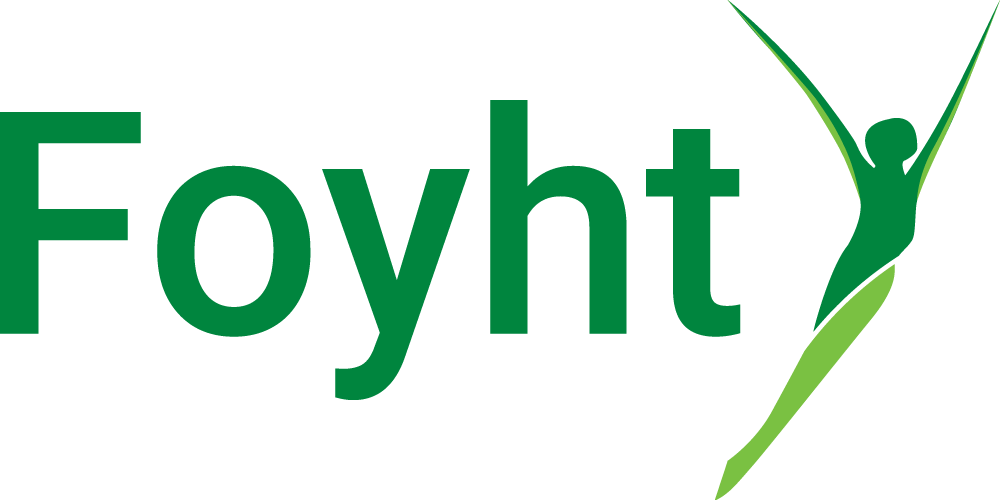What Real Resilience Looks Like in Practice
This is part of a special series for Foyht: Building Resilient Teams in High-Stress Environments, practical guidance for practitioners, clinic owners and small business leaders navigating the emotional, physical, and cultural demands of the wellbeing industry.

Written by HR Consultant Samantha Newton, the series explores how we can move beyond burnout, embed real resilience, and create workplaces that protect the people doing the healing, not just the clients they serve.
Let’s Bust a Big Fat Myth, Shall We?
Resilience is not about being bulletproof.
You are not a robot. You’re not a monk on a mountaintop. And you’re certainly not a human-shaped sponge for everyone else’s stress.
Resilience is not martyrdom. It’s not about holding it all in, soldiering on, and collapsing only when no one’s looking. It’s about bending without breaking. It’s the bounce, not the bravado.
But far too many leaders in the health and wellbeing sector still wear burnout like a badge. As if running on fumes proves your worth.
It doesn’t.
What actually builds resilient teams? Not individuals with iron willpower.
It’s systems.
It’s structure.
It’s leadership.
Let’s Go Back to Sarah
Last week, we met Sarah, the brilliant chiropractor who hit her emotional rock bottom in the front seat of her own car. Crying alone after hours. Smiling through burnout by 9am the next morning.
But here’s the plot twist: she didn’t quit. She didn’t break. She rebuilt.

She stopped trying to “just power through” and started leading with intention.
Here’s what she did:
- Introduced structured breaks into her team’s day (and stuck to them)
- Shifted to a four-day week for everyone
- Added regular ‘emotional debrief’ sessions, a safe space to talk
- Invested in admin support so her team could focus on their actual skill sets
The result?
- Reduced sick days
- Increased client satisfaction
- Happier, more stable staff
- And, surprise, Sarah actually liked her job again
One of her massage therapists said it best:
“I didn’t realise how close I was to snapping until we started doing those weekly check-ins. Now I feel heard, not just hired.”
Real resilience isn’t a mindset. It’s a framework.
And the great news?

It’s one you can build.
The 3 Pillars of Resilient Teams
Let’s get practical. You don’t need a corporate budget or a mindfulness guru in the staff kitchen. You need these three things, consistently.
1. Clarity
Define roles. Set boundaries. Give people actual expectations, not guesswork.
“What exactly am I responsible for?” should never be a mystery.
Burnout thrives in confusion. Resilience thrives in clarity.
2. Compassion
Not the fluffy, inspirational-poster kind. Real compassion.
That means:
- Making space to speak up without fear
- Listening without jumping to fix or judge
- Leading with empathy, not ego
If your team is scared to say “I’m not coping,” then you’ve got a trust issue, not a resilience one.
3. Consistency
This is the one everyone forgets. Not sexy, not sparkly, but absolutely vital. Predictable schedules. Reliable processes. Fair treatment. Regular 1:1s.
Why?
Because people feel safe when things are stable. And safety is the bedrock of resilience.

A recent CIPD report found that employees with clearly defined roles and workloads reported 40% higher job satisfaction and significantly lower stress scores. That’s not fluff, that’s infrastructure.
Forget Performative Wellness. Go Practical.
If your only nod to “wellbeing” is office yoga once a year, you’ve missed the point.
You want resilience?
Try this instead:
- Mental health days without shame
- Clear, capped caseloads
- Proper rota flexibility
- A culture where lunch breaks are normal, not rebellious
Resilience doesn’t come from heroics. It comes from habit. From structure. From showing up for your team the same way you expect them to show up for clients.
And no, not every clinic can afford to hire more staff or reduce to four days a week. But every clinic can start with one change:
A break protected. A rota revisited. A conversation opened. Small steps beat big burnout.
Real-World Reminder: Burnout Isn’t Personal, It’s Structural
Let’s anchor this in the now. In March 2025, a survey by the Medical Defence Union (MDU) of nearly 500 NHS doctors found that:
- 69% said extreme tiredness had impaired, or may have impaired, their ability to treat patients safely
- 35% reported their care was definitely impaired by fatigue
- 26% admitted to patient harm or near misses linked to exhaustion
- And 38% said they rarely or never get proper breaks at work, even lunch (The Guardian, March 2025)
These aren’t weak professionals. These are skilled humans breaking under unsustainable systems. And that’s exactly why resilience needs to be designed, not demanded.
Burnout Prevention = Resilient Design
Let’s be crystal clear:
Resilience isn’t just a nice bonus, it’s your frontline defence against burnout.

Want to protect your team?
Don’t tell them to “cope better.” Give them a structure that makes coping possible.
Leadership Challenge: Your Weekly Check-In
Before you rush back into the whirlwind, ask yourself:
- Does everyone on my team know what’s expected of them?
- When was the last time I asked, “How are you really?”
- What’s one thing I can make more predictable for my team this week?
No jargon.
No initiatives.
Just honest leadership.
Resilience Is Built. Not Inherited.
It’s not in your DNA. It’s not a personality trait. It’s a workplace culture. And it’s your job, as a leader, to shape it.
Stop trying to be the hero. Build the safety net.
Because the strongest teams aren’t made of superheroes. They’re made of humans with support.
Coming Next: The Culture Blueprint
In Part Three, we’ll dive into accountability and culture, the everyday micro-moments that define whether your wellbeing strategy works… or just gathers dust.
Let’s Connect
If you want to embed resilience into your practice, without fluff, let’s talk.
Main – Photo by Jaime Spaniol on Unsplash






